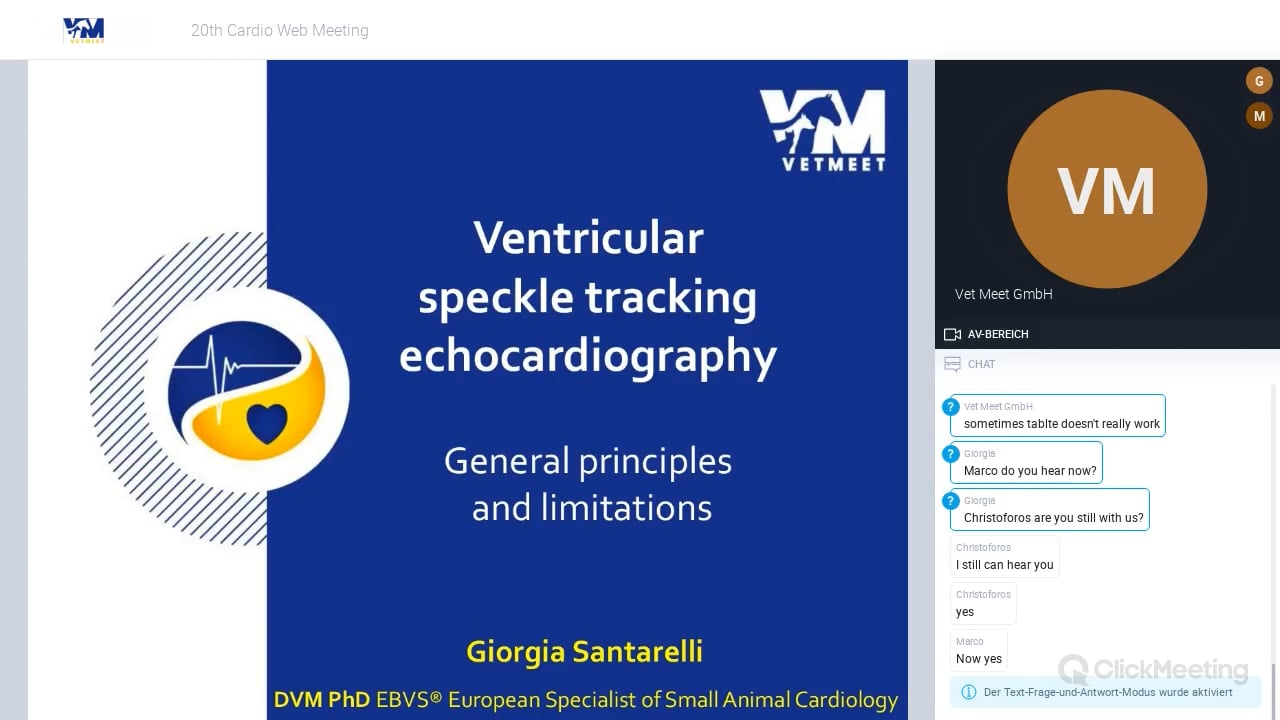Ventricular speckle tracking echocardiography: general principles and limitations
Description
Two-dimensional (2-D) speckle tracking echocardiography (STE) is a relatively new imaging technique, based on myocardial deformation analysis and used in human and veterinary cardiology to aid the assessment of cardiac function. It employs a post-processing software algorithm that tracks over time the motion of fixed patterns of speckles, which represent a series of artefacts generated by reflection, refraction and scattering of ultrasound beams, present in grayscale 2-D echocardiographic images. Unique or nearly unique patterns of speckles are contained in specific regions of interrogation and act as natural acoustic fingerprints. Through tracking of the speckles of a myocardial region over time, the algorithm can calculate the direction and velocity of movement of a segment. Via comparison of two different segments of the myocardium, parameters such as strain and strain rate (SR) can be calculated
Topics
TWO-DIMENSIONAL SPECKLE TRACKING ECHOCARDIOGRAPHY AND STRAIN ANALYSIS
You need to log in to view your current credits. Login
Speaker

 Vet Meet Germany
Vet Meet Germany Hill's Vorbereitungskurs Ernährungsberatung
Hill's Vorbereitungskurs Ernährungsberatung Hill's Aufbaukurs - stationäre Patienten
Hill's Aufbaukurs - stationäre Patienten


